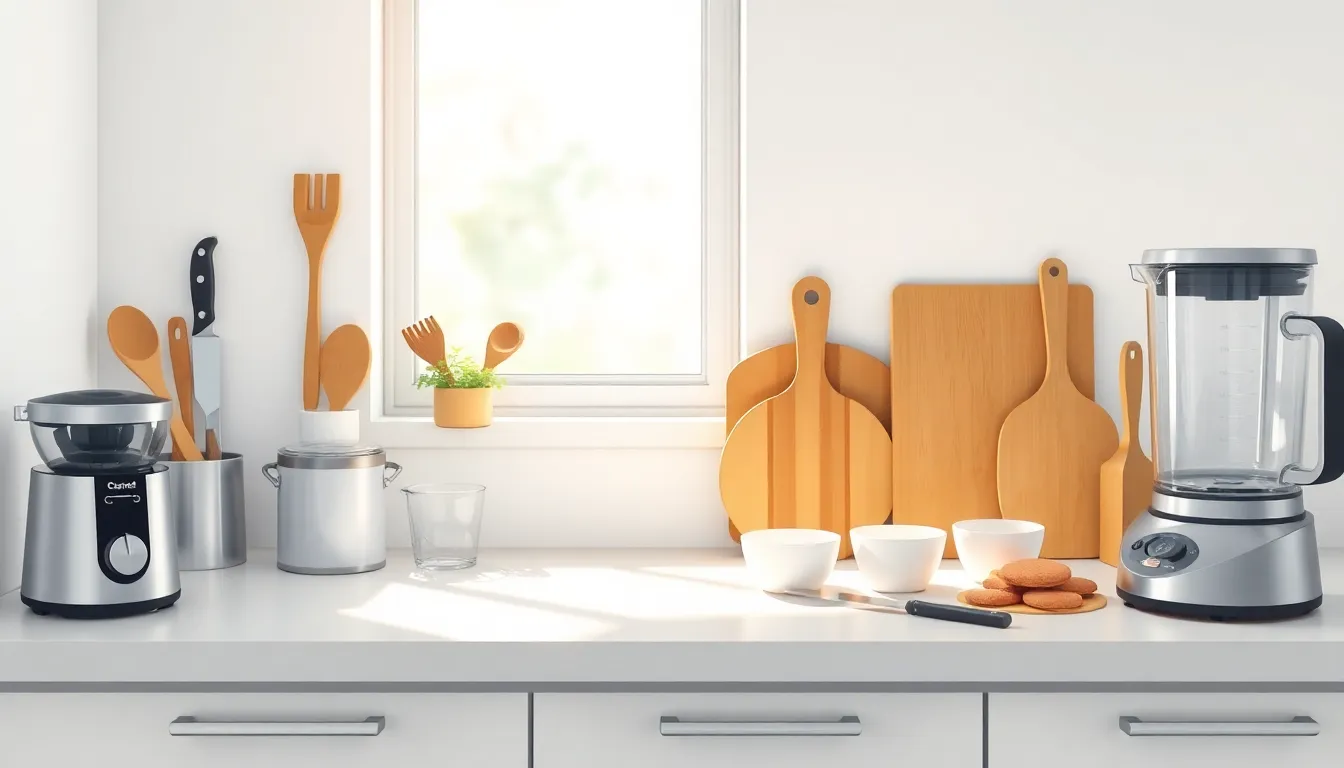Stepping into the kitchen for the first time can feel like entering a high-stakes cooking competition—without the fancy lighting or supportive judges. But don’t worry; everyone starts somewhere, and the only thing burning should be your enthusiasm, not your toast. With the right tips, even the most inexperienced chef can whip up delicious meals that impress friends and family.
Cooking Tips For Beginners
Developing essential cooking techniques builds confidence and sets the foundation for enjoyable meals. Mastering a few basics transforms novice cooks into capable chefs.Knife Skills
Knife skills play a vital role in efficiency and safety. A sharp knife ensures cleaner cuts and requires less force. Beginners should practice the proper grip, using fingers to guide the food while maintaining safety. Chopping vegetables like onions and bell peppers becomes easier with focused practice. Dicing herbs adds flavor to dishes while enhancing presentation. Regular sharpening and proper storage prolong the life of knives.Cooking Methods
Understanding various cooking methods expands culinary possibilities. Sautéing involves cooking food quickly in a small amount of oil, preserving nutrients and flavor. Simmering allows flavors to meld without boiling, ideal for soups and sauces. Roasting enhances sweetness and texture in vegetables and meats using dry heat. Grilling adds a distinct smoky flavor, great for outdoor cooking. Baking transforms dough into favorite dishes, from bread to cakes, emphasizing precision in temperature and time.Kitchen Tools and Equipment

Must-Have Utensils
Knives play a crucial role in food preparation, allowing for precise cuts. Spoons, made of wood or silicone, are versatile for mixing and serving. Measuring cups ensure accuracy in ingredients, essential for successful recipes. Cutting boards provide a clean surface for chopping fruits and vegetables. Whisks, whether balloon or flat, are perfect for blending mixtures. Tongs make flipping and serving hot foods easy. Lastly, spatulas aid in turning and flipping foods during cooking.Recommended Appliances
Ovens serve as the foundation for baking and roasting various dishes. Stovetops offer versatility for boiling, frying, and sautéing. Blenders assist in creating smoothies, soups, and sauces with speed. Food processors save time on chopping and mixing ingredients efficiently. Slow cookers enable hands-free cooking, perfect for busy schedules. Microwaves reheat leftovers quickly, offering convenience. Coffee makers add a touch of enjoyment for morning routines, enhancing daily life.Ingredient Selection and Preparation
Ingredient selection plays a vital role in cooking success. Choosing fresh ingredients enhances flavor and nutrition. Fresh ingredients often provide better texture and taste compared to processed options. Processed ingredients can be convenient but may contain preservatives and excess sodium. Opting for whole foods where possible can significantly improve the quality of meals.Fresh vs. Processed Ingredients
Fresh ingredients include fruits, vegetables, meats, and herbs. These items typically offer superior flavor and essential nutrients. In contrast, processed ingredients often lack the same vibrant profiles. Packaged items may save time but compromise taste and health. Understanding the balance between convenience and quality is essential for beginners. When accessible, fresh options should be prioritized over processed choices.Prepping Ingredients
Prepping ingredients efficiently saves time during cooking. Start by washing fruits and vegetables thoroughly to remove any dirt or pesticides. Next, chop, slice, or dice items based on the recipe’s requirements. Uniform pieces ensure even cooking. Organizing ingredients in separate bowls can streamline the cooking process. Labeling these bowls helps keep track of what goes into each dish. Finally, keeping a clean workspace enhances the overall cooking experience. Preparation lays the groundwork for a successful and enjoyable meal.Simple Recipes to Start With
Easy recipes provide a great way for beginners to gain confidence in the kitchen. Starting with simple dishes helps develop essential skills and fosters a love for cooking.Breakfast Ideas
Oatmeal makes an excellent breakfast choice. Begin by cooking oats in water or milk, then add fruits, nuts, or honey for flavor. Another option involves scrambled eggs. Mixing eggs in a bowl and cooking them in a pan creates a protein-rich meal that pairs well with toast. Smoothies are also quick and nutritious. Blend leafy greens, bananas, and yogurt for a refreshing drink packed with vitamins. These breakfast ideas not only cater to diverse tastes but also ensure a strong start to the day.Lunch and Dinner Options
Pasta is ideal for beginners looking for a filling meal. Boil water, add the pasta, and simmer until tender. Toss it with olive oil, garlic, and vegetables for a quick dish. Stir-fried vegetables also serve as a healthy option. With pre-cut veggies, sauté them in a pan until tender, adding soy sauce for flavor. Tacos make for a fun dinner choice. Fill soft or hard shells with seasoned meat, beans, lettuce, and cheese for a customizable meal. These options ensure success and variety for novice cooks.Easy Snacks
Yogurt with granola and fresh fruit serves as a perfect, nutritious snack. Layer the ingredients in a bowl for a delicious treat. Another snack option includes vegetable sticks and hummus. Cut carrots, cucumbers, and bell peppers into sticks, and pair them with store-bought hummus for a refreshing crunch. Popcorn also offers a simple, tasty snack. Prepare it in an air popper or on the stove, seasoning it with salt or spices to taste. These easy snacks provide healthy choices to keep energy levels up throughout the day.Common Cooking Mistakes to Avoid
Cooking mistakes often hinder beginners from enjoying their culinary journey. Understanding common pitfalls leads to better meals.Overcooking vs. Undercooking
Overcooking drys out proteins and veggies, reducing flavor and texture. For instance, chicken should reach an internal temperature of 165°F. Undercooking can pose safety risks, especially with meats like poultry. It’s important to use a food thermometer for accurate results. Keeping track of cooking times for different ingredients supports consistent outcomes. Stirring frequently can help prevent uneven cooking and burning on the bottom.Proper Seasoning Techniques
Seasoning transforms a dish from bland to flavorful. Beginners often overlook the importance of salt, which enhances natural flavors. Adding spices at the right stage of cooking maximizes their impact. For many dishes, seasoning at different stages improves flavor depth. Fresh herbs should typically be added at the end for maximum aroma. Tasting throughout the cooking process ensures balance, adjusting seasonings as necessary.Conclusion
Embracing the culinary journey can be both thrilling and rewarding for beginners. With the right techniques and tools in hand, anyone can create delicious meals that impress family and friends. Prioritizing fresh ingredients and maintaining a clean workspace sets the stage for success. By starting with simple recipes and avoiding common pitfalls, novice cooks can build their confidence and skills. Cooking isn’t just about following recipes; it’s an opportunity for creativity and personal expression. As they experiment and learn, they’ll find joy in the kitchen and develop a lifelong passion for cooking.
By starting with simple recipes and avoiding common pitfalls, novice cooks can build their confidence and skills. Cooking isn’t just about following recipes; it’s an opportunity for creativity and personal expression. As they experiment and learn, they’ll find joy in the kitchen and develop a lifelong passion for cooking.

